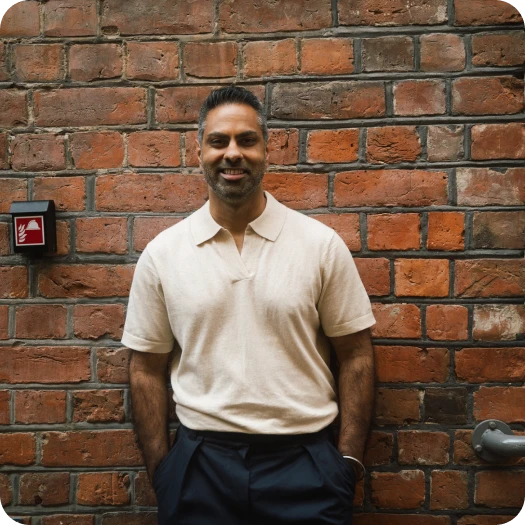Pay Off Student Loans or Invest: Why You Don’t Have to Choose


The best approach is likely to split your money between both—chipping away at your debt and making smart investments at the same time.
Your Options: Pay Off Loans, Invest, or Do Both
A college education is one of the most important investments in your career. But according to the Federal Reserve, the average student graduates with about $35,000 in loans, putting them directly in debt from the time they graduate from college.
Before you panic, remember that student loans can offer some benefits:
- Consistently making on-time payments can build and strengthen your credit score. The interest rates are often lower than credit cards or personal loans.
- Student loan interest may be tax-deductible.
- You get access to a higher earning potential through your education.
While investing early and consistently offers huge benefits, it can feel out of reach when hundreds of dollars are going toward loan payments each month.
When deciding between paying down loans or investing, you have three main options:
- Option 1: Make the minimum monthly payment on your student loans and invest the rest.
- Option 2: Put as much as possible toward your loans, then start investing once they’re paid off.
- Option 3: Take a balanced approach by splitting extra money between loan payments and investments, always covering at least the minimum due.
The balanced approach shifts your perspective from “either/or” to “both/and.” This way, you can reduce debt while growing your wealth, avoid missing out on potential returns, and build lasting financial habits that serve you well beyond completing your loan payment.
Factors to Consider
Here are some considerations to help you determine the best path for your situation.
1. Your loan interest rates
If your student loans have interest rates above 6 to 7%, Option 2 (paying them off aggressively) is often your best bet. You are essentially locking in a guaranteed return of 6 to 7%, which is difficult to match consistently in the stock market.
If your loans are closer to 3 to 4% interest, Option 1 (paying the minimum) may make more sense. The stock market has historically averaged about 8% annually, so paying the minimum on a 3% loan while investing at 8% could give you a 5% profit margin.
Many borrowers fall in the middle, with rates between 4 and 6%. This is why Option 3, the hybrid approach, works so well. It allows you to reduce debt while growing your wealth at the same time, without relying entirely on one strategy.
2. Your personal comfort with debt
We can break down the numbers, but if debt keeps you up at night, the math will not matter.
Some people cannot feel at ease knowing they’re in debt, even at very low interest rates. If that sounds like you, lean toward Option 2 so you can pay off your loans as soon as possible and gain the peace of mind you need.
If you are comfortable paying off debt slowly, especially with interest rates below 6%, Option 1 or Option 3 may be a better fit. These allow you to take a more strategic approach, weighing the interest on your loans against the potential returns from investing to see what will give you the best outcome.
3. Your employer's 401(k) match
Beyond these three options, there’s another strategy that beats them all: maximizing free money from your 401(k).
If your employer matches contributions, make it your top priority to contribute enough to get the full match before doing anything else. If you earn $50,000 and your company matches 50% of your contributions up to 6% of your salary, that is essentially $1,500 in free money every year.
No matter which option you choose, adjust your numbers so you’re taking advantage of the full match first. Once that’s set, you can split the rest of your money according to your chosen debt and investment strategy.
4. Your emergency fund status
No matter how eager you are about investing or paying off your debt, if you don't have emergency savings, you're setting yourself up for disaster.
Without it, one car repair, medical bill, or job loss can push you into credit card debt at 18 to 25% interest, wiping out any gains from your loans or investments.
Before you dive right into the options for managing your debt and investment, it’s crucial to build at least $1,000 in emergency savings. This might delay your wealth-building by a few months, but it protects you from going backward financially when life inevitably happens.
5. Your income trajectory
Remember that your current salary is not your forever salary, and that can change everything.
If you are 22 and making $35,000 but expect to earn $60,000 or more within five years, lean toward Option 1 or allocate more toward investing with Option 3. You can always pay down loans more aggressively once your income increases, but you cannot go back and invest at today’s lower tax bracket.
If your income doubles in a few years, the loan payments that feel massive now will feel much more manageable. On the other hand, if your income is stable or near peak earning potential, Options 2 or 3 with larger loan payments may make more sense for your financial security.
Why Investing Early Changes Everything
When it comes to investing, starting early can multiply your wealth over time—and delaying means missing out on potential growth.
Compound interest doesn't care about your debt
Starting to invest in your 20s, even with small amounts of money, can grow your money exponentially thanks to compound interest.
For example, investing $50 a month starting at 22 can outperform investing $300 a month if you’re starting at 32. Time is the ultimate multiplier for your investments, and the earlier you start, the more powerful it becomes.
Tax-advantaged accounts have annual limits
Some investment opportunities have deadlines you cannot undo. For example, you cannot go back and contribute to last year’s Roth IRA or 401(k).
These accounts have annual contribution limits, and once the year ends, that chance to grow your money tax free is gone for good. Missing it means leaving potential growth and savings on the table, and that can’t be recovered.
Market volatility becomes your friend, not your enemy
Starting young gives your investments decades to recover from market downturns. What seems alarming in the short term becomes almost irrelevant over 30 or 40 years.
That is why your time horizon matters. Giving your investments time to grow allows volatility to even out and your wealth to maximize over the long term.
You develop wealthy habits while you're young
Like any habit, starting to invest in your 20s can set you up for a lifetime of wealth-building.
By the time your income starts growing, saving and investing will already feel automatic, making it easier to grow your wealth without thinking twice.
Your future self will thank you (with interest)
Every dollar you invest today works harder than every dollar you invest later. Even a small amount can grow significantly over decades, thanks to compound interest.
Starting early means you do not need to invest large sums to see meaningful growth. Time is on your side, giving your money space to multiply and reducing the pressure to invest more than you can comfortably afford.
Three Quick Investing Tips for Beginners
When it comes to investing, I like to keep things simple. If you’re ready to start, these three principles will help guide you:
1. Automate everything so you can't mess it up
Set up automatic transfers to your investment accounts just like you do for bills.
Whether it’s $25 or $250 a month, automation removes the temptation to spend the money elsewhere and frees you from the mental energy of deciding what to do with extra cash each month.
2. Stick to boring index funds and get rich slowly
When you’re starting out, avoid complicated schemes like stock-picking, crypto, or the latest trendy investment your roommate is hyping about.
Low-cost index funds that track the S&P 500 are perfect for beginners. They are diversified, inexpensive, and historically reliable. When it comes to building wealth, boring often wins.
3. Start small, but start now
I can’t emphasize this enough: start investing as early as possible.
You do not need $1,000 to begin. Many brokerages let you start with as little as $1. What matters most at the beginning is building the habit of putting extra money toward growing your wealth. Over time, you can increase your contributions as your income grows.
If you’re just starting out with investing, I share a more in-depth guide on investing for beginners that could be helpful for you.
So, Which Should You Choose?
Here’s a quick overview to help you decide which approach is best for you.
Choose Option 3 (do both) if…
Personally, I would choose the hybrid approach, Option 3, if you have:
- low interest rates (between 4 and 7%)
- at least $1,000 in emergency savings
- your full employer 401(k) match
This is the most balanced option of the three. You build wealth through early investing while still making meaningful progress on your debt. It keeps you from relying on a single strategy and helps you develop lifelong money habits that will serve you long after your loans are paid off.
Choose Option 2 (pay off student loans) if…
Choose Option 2 if debt keeps you up at night or your student loan interest rates are above 7%.
Being debt free can give you peace of mind, and that feeling is often worth more than the possibility of slightly higher returns from investing. If your debt carries more than 7% interest, paying it off is like locking in a guaranteed return that is hard to beat in the stock market.
Choose Option 1 (invest) if…
On the other hand, you should choose Option 1 if your loan interest rates are 4% or lower, you are comfortable carrying debt, and you have decades ahead to invest.
With rates that low, you can come out ahead by paying the minimum on your loans while your investments earn higher returns over time.
Just remember, whatever option you choose: Consistency matters more than perfection. The best strategy is the one you can commit to and follow for years.
Living Your Rich Life
Paying off loans and investing can both work, but the key is choosing a path that supports the life you want to live. Your plan should align with your values, priorities, and current income, not an imagined version of your future self.
Debt does not have to put your life on hold. When you set up a healthy wealth system that runs automatically in the background, you free yourself to enjoy life today while still making steady progress toward your goals.